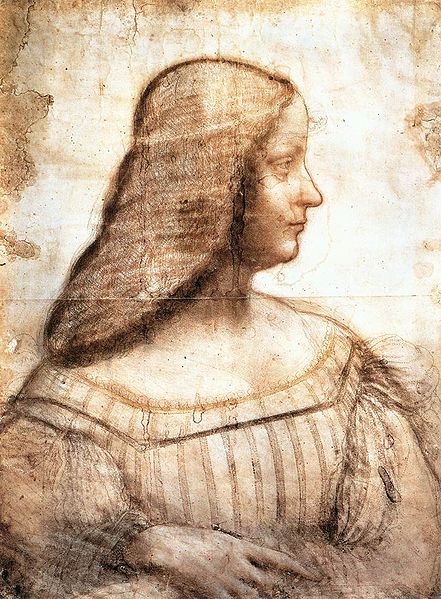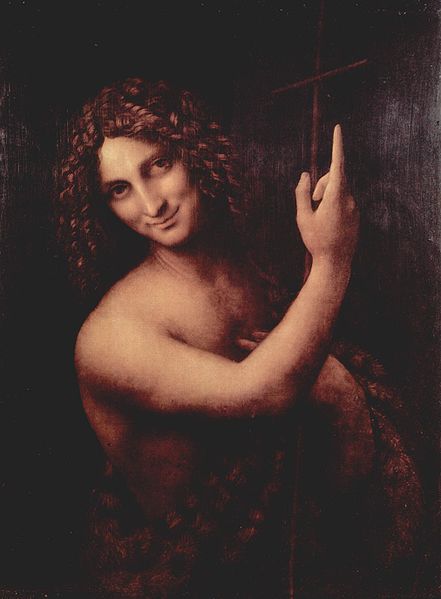Renaissance man: Leonardo’s personal life
Personal life

Study for a portrait of Isabella d'Este (1500) Louvre.
Within Leonardo’s lifetime, his extraordinary powers of invention, his “outstanding physical beauty”, “infinite grace”, “great strength and generosity”, “regal spirit and tremendous breadth of mind” as described by Vasari, as well as all other aspects of his life, attracted the curiosity of others. One such aspect is his respect for life evidenced by his vegetarianism and his habit, described by Vasari, of purchasing caged birds and releasing them.
Leonardo had many friends who are now renowned either in their fields or for their historical significance. They included the mathematician Luca Pacioli, with whom he collaborated on a book in the 1490s, as well as Franchinus Gaffurius and Isabella d’Este.[citation needed] Leonardo appears to have had no close relationships with women except for his friendship with Isabella d’Este. He drew a portrait of her while on a journey which took him through Mantua, and which appears to have been used to create a painted portrait now lost.
Beyond friendship, Leonardo kept his private life secret. His sexuality has been the subject of satire, analysis, and speculation. This trend began in the mid-16th century and was revived in the 19th and 20th centuries, most notably by Sigmund Freud.
Leonardo’s most intimate relationships were perhaps with his pupils Salai and Melzi, Melzi describing Leonardo’s feelings for him as both loving and intensely passionate. It has been claimed since the 16th century that these relationships were of a sexual or erotic nature. Court records of 1476, when he was aged twenty-four, show that Leonardo and three other young men were charged with sodomy, and acquitted. Since that date much has been written about his presumed homosexuality and its role in his art, particularly in the androgyny and eroticism manifested in John the Baptist and Bacchus and more explicitly in a number of erotic drawings.

Salai as John the Baptist (c. 1514)—Louvre
Assistants and pupils
Gian Giacomo Caprotti da Oreno, nicknamed Salai or Il Salaino (“The Little Unclean One” i.e., the devil), entered Leonardo’s household in 1490. After only a year, Leonardo made a list of his misdemeanours, calling him “a thief, a liar, stubborn, and a glutton”, after he had made off with money and valuables on at least five occasions, and spent a fortune on clothes. Nevertheless, Leonardo treated him with great indulgence and he remained in Leonardo’s household for the next thirty years. Salai executed a number of paintings under the name of Andrea Salai, but although Vasari claims that Leonardo “taught him a great deal about painting”, his work is generally considered to be of less artistic merit than others among Leonardo’s pupils, such as Marco d’Oggione and Boltraffio. In 1515, he painted a nude version of the Mona Lisa, known as Monna Vanna. Salai owned the Mona Lisa at the time of his death in 1525, and in his will it was assessed at 505 lire, an exceptionally high valuation for a small panel portrait.
In 1506, Leonardo took on another pupil, Count Francesco Melzi, the son of a Lombard aristocrat, who is considered to have been his favourite student. He travelled to France with Leonardo, and remained with him until the latter’s death. Upon Leonardo’s death, Melzi inherited the artistic and scientific works, manuscripts, and collections of Leonardo, and faithfully administered the estate.
Source: http://en.wikipedia.org


This Post Has 0 Comments